Introduction

Iranian handicrafts are a reflection of the country’s rich cultural heritage and artistic tradition. Rooted in centuries of history, these crafts represent the creativity, patience, and skills of Iranian artisans across generations. From intricate carpets and colorful ceramics to delicate metalwork and handmade textiles, each piece tells a story of regional identity and timeless craftsmanship. In this article, we briefly introduce the most well-known traditional handicrafts of Iran.
List of Iranian Handicrafts
Description: Iranian handicrafts reflect the rich history and culture of this land. In this section, some of the most important traditional handicrafts of Iran are introduced.
- Persian Carpets and Rugs
- Khatamkari (Marquetry)
- Minakari (Enamel Work)
- Ghalamzani (Metal Engraving)
- Termeh (Handwoven Silk Fabric)
- Pottery and Ceramics
- Tilework
- Calligraphy and Illumination
- Wood Carving (Monabbat)
- Traditional Jewelry
Persian Carpets and Rugs

Persian carpets and rugs are one of the most famous and intricate forms of Iranian handicrafts, known for their exceptional craftsmanship, rich history, and unique designs. These rugs are often handwoven using high-quality materials such as wool, silk, and cotton. Each region in Iran has its own distinctive style and patterns, often reflecting the cultural and historical influences of the area.
Persian rugs are celebrated worldwide for their intricate patterns, vibrant colors, and durability. They are not just functional items but also artistic expressions, with many featuring detailed motifs inspired by nature, such as flowers, animals, and geometric shapes. The art of carpet weaving has been passed down through generations, making it a vital part of Iran’s cultural heritage.
The most renowned Persian carpets come from cities such as Isfahan, Kashan, Tabriz, and Qom, each known for its unique weaving techniques and patterns. These rugs are often used as decorative pieces in homes and public spaces, adding beauty and a sense of elegance.
Miniature Painting
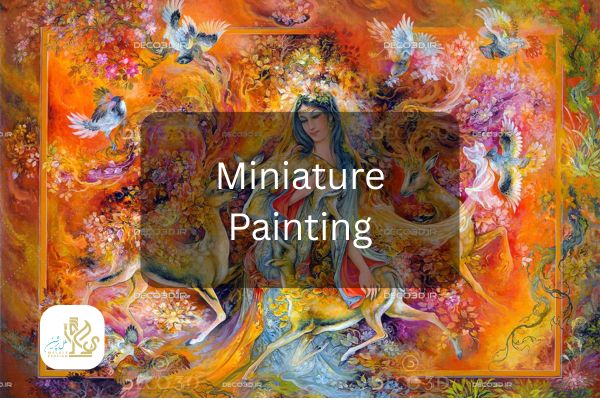
Persian miniature painting is a traditional art form known for its intricate detail, vivid colors, and delicate brushwork. It flourished especially during the Ilkhanid, Timurid, and Safavid periods (13th–17th centuries), often illustrating epic poetry, historical manuscripts, and mythical tales. These artworks typically feature stylized natural elements, elegant human figures, and detailed architectural backgrounds
One of the most renowned contemporary masters of this art is Mahmoud Farshchian, whose modern interpretations have brought new life to the Persian miniature tradition while preserving its deep spiritual and cultural essence. Persian miniature continues to be celebrated as a visual symbol of Iran’s artistic heritage.
Khatamkari (Marquetry)

Khatamkari is a traditional Persian art of inlaying, where skilled artisans create intricate geometric patterns by combining thin layers of wood, bone, and metal. This delicate craft originated during the Safavid era (16th–17th centuries) and became highly popular in cities like Isfahan and Shiraz. Khatamkari pieces, such as jewelry boxes, frames, and furniture, are admired for their meticulous precision and ornamental beauty.
Each piece can take weeks or even months to complete, requiring patience, fine craftsmanship, and an exceptional eye for detail. Today, Khatamkari continues to represent the sophistication and artistic spirit of Iranian handicrafts.
Mina Kari (Enamel Work)
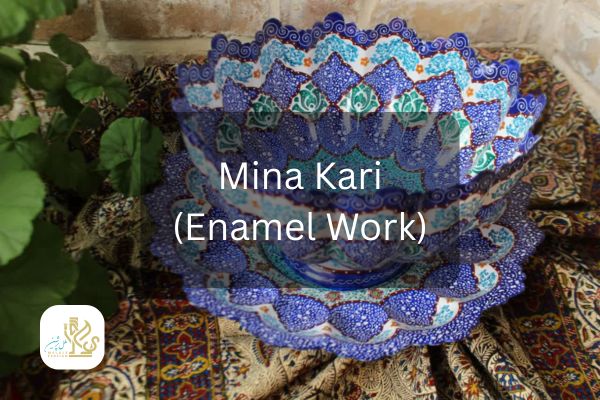
Mina Kari, or Persian enamel work, is a delicate art that involves painting intricate designs with colored glass powder on metal surfaces, typically copper. The pieces are then fired in a kiln at high temperatures, which fuses the glass to the metal and creates a glossy, vibrant finish.
This art form dates back to ancient Persia but flourished during the Safavid era (16th–17th centuries), especially in Isfahan, which remains a hub for Mina Kari today. The patterns often feature floral motifs, arabesques, and miniature-style scenes. Mina Kari is commonly used to decorate plates, vases, jewelry boxes, and decorative tiles.
Ghalamzani (Metal Engraving)

Ghalamzani, or metal engraving, is a traditional Iranian craft that involves the intricate art of carving or etching designs onto metal surfaces, typically copper, brass, or silver. The process begins by creating detailed patterns and motifs using specialized tools to carve into the metal. The designs are often inspired by Persian art, featuring floral motifs, geometric patterns, and sometimes calligraphy.
This craft has deep roots in Iranian history, with its peak during the Safavid period (16th-18th centuries). Metal engravings were commonly used to decorate household items such as trays, teapots, and vases, as well as ceremonial objects. Over time, Ghalamzani has remained an important form of artistic expression in Iran, with skilled artisans continuing the tradition in modern times.
Termeh (Handwoven Silk Fabric)
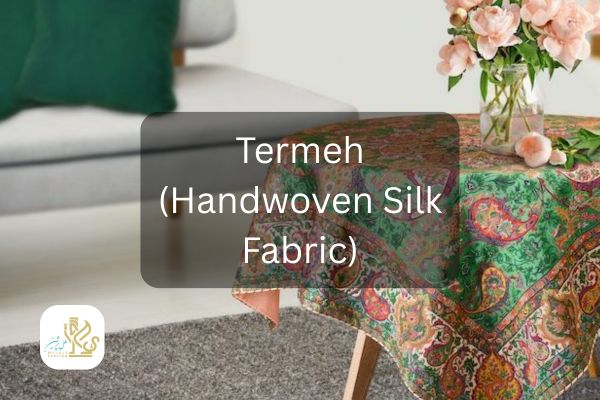
Termeh is a traditional Persian handwoven fabric, typically made from silk and sometimes wool. Known for its luxurious texture and intricate designs, Termeh is highly regarded for its richness and elegance. The fabric is often used in the creation of high-end items such as garments, decorative cushions, tablecloths, and wall hangings. The intricate patterns woven into the fabric usually feature floral and geometric motifs, with gold or silver threads added for a touch of opulence.
This craft has been practiced in Iran for centuries, with its origins dating back to the Safavid dynasty (16th-18th centuries). Termeh was especially popular in regions like Yazd and Kashan, where skilled artisans passed down their weaving techniques through generations. Today, Termeh continues to be highly prized as a symbol of Persian artistry, and it remains a significant part of Iran’s textile heritage.
Pottery and Ceramics
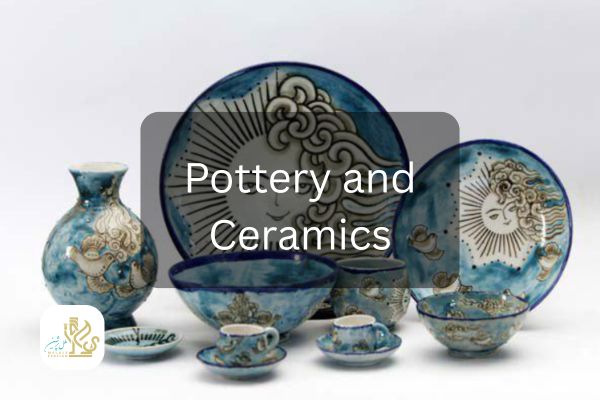
Pottery and ceramics have been an integral part of Persian culture for thousands of years, with a rich tradition that dates back to the ancient civilizations of Persia. Persian pottery is known for its craftsmanship, colorful glazes, and artistic patterns. It includes various types of ceramic works such as vases, bowls, plates, and decorative items.
The most famous styles of Persian pottery include the blue-and-white pottery of Kashan and the intricate designs of Isfahan. Persian potters are skilled at using various techniques, including hand-shaping, wheel-throwing, and glazing, creating both functional and artistic pieces. The designs often feature motifs inspired by nature, geometric patterns, and traditional Persian artistry.
The history of Persian pottery stretches back to the Achaemenid period (6th century BC), where pottery was used for both daily life and ceremonial purposes. Over time, the craft evolved, with significant contributions during the Seljuk, Safavid, and Qajar dynasties. Today, Persian pottery remains an important art form, both for collectors and as a representation of Iranian culture.
Giveh (Handmade Footwear)
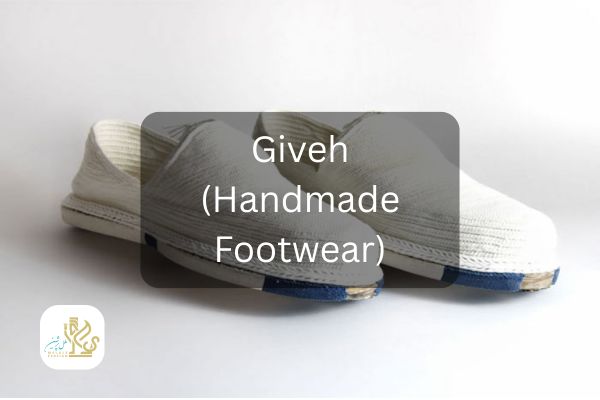
Giveh is a traditional handmade footwear originating from rural and mountainous regions of Iran, particularly in the provinces of Kermanshah, Kurdistan, and Yazd. It is crafted using natural materials such as cotton thread, wool, and leather, making it lightweight, breathable, and ideal for warm climates and rugged terrains.
Giveh shoes are known for their durability, comfort, and eco-friendly production methods. The upper part is often woven by hand, while the sole is made from leather or recycled rubber. These shoes have been worn for centuries by Iranian villagers, farmers, and travelers due to their practicality and cultural significance.
In recent years, Giveh has seen a revival as part of sustainable fashion, with modern designs appealing to both domestic and international markets. Its unique blend of function, tradition, and artistry makes Giveh a symbol of Iran’s rich handicraft heritage.
Sofalgari (Clay Work)
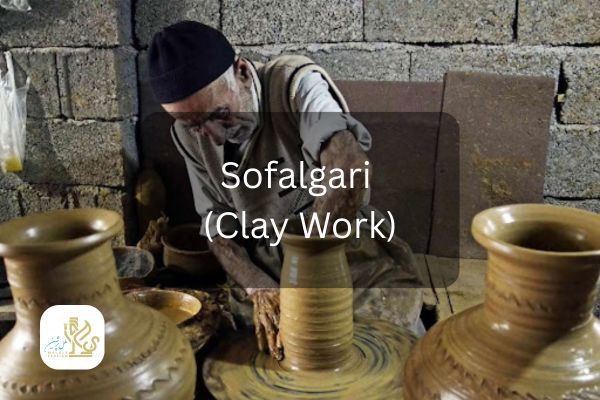
Sofalgari, or clay work, is one of the oldest forms of handicraft in Iran, dating back to ancient civilizations such as Elam and early Persia. Iranian artisans have long been skilled in shaping clay into various forms, from simple everyday items to highly decorative and symbolic pieces.
Traditional clay works include pottery, tiles, and decorative objects often featuring intricate patterns and vibrant glazes. Cities like Lalejin in Hamedan Province are renowned centers for Sofalgari, where craftsmen continue to create both traditional and contemporary clay works.
Sofalgari reflects the deep connection between Iranian culture and the earth, showcasing creativity, functionality, and artistry that have been passed down through generations.
Wood Inlay (Moaragh Kari)

Moaragh Kari, or wood inlay work, is a refined Persian art where different types of wood, each with distinct natural colors and textures, are carefully cut and assembled to create intricate patterns and images. This craft requires great precision and artistry, as artisans must match pieces seamlessly to form detailed floral, geometric, or pictorial designs.
The origins of Moaragh Kari date back centuries, flourishing particularly during the Safavid period when art and craftsmanship were highly valued. Today, Isfahan remains one of the main centers of this delicate and impressive handicraft. Wood inlay is often used in furniture, wall panels, decorative boxes, and architectural ornaments, showcasing both technical mastery and aesthetic beauty.
Glassblowing and Crystal Works
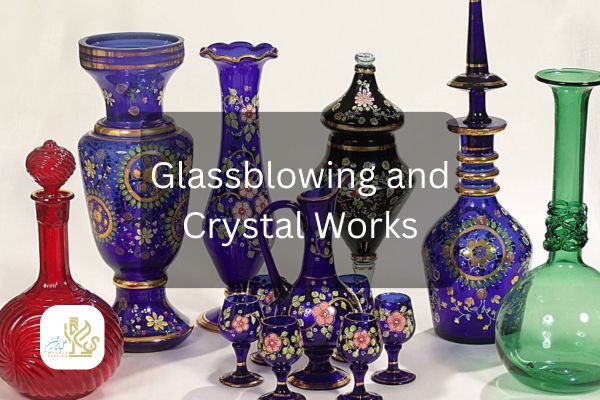
Glassblowing and crystal craftsmanship have a long history in Iran, dating back to the pre-Islamic era, particularly during the Sassanian Empire. Persian artisans mastered the art of shaping molten glass into delicate vessels, decorative items, and intricate designs using traditional techniques.
The cities of Shiraz and Isfahan became renowned centers for glass production, especially during the Safavid era, when Persian glassware was highly sought after both locally and internationally. Today, Iranian glassblowing continues to blend ancient methods with modern creativity, producing elegant crystal works, vases, lamps, and decorative art pieces that reflect centuries of skill and artistry.
Conclusion
Iranian handicrafts are a vivid reflection of the country’s rich cultural and historical heritage. From the intricate patterns of Persian carpets to the delicate craftsmanship of miniature paintings and glassworks, each art form tells a unique story passed down through generations. These traditional crafts not only preserve the artistic spirit of Iran but also continue to inspire the world with their timeless beauty and masterful techniques.




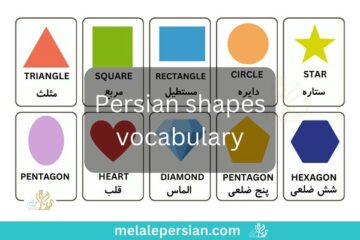


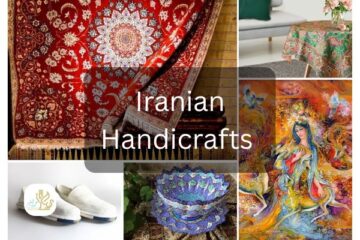


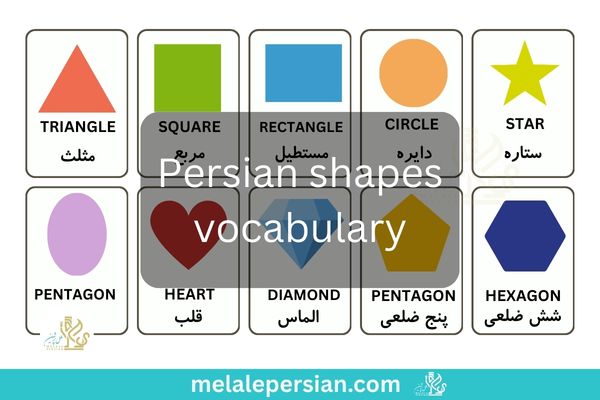

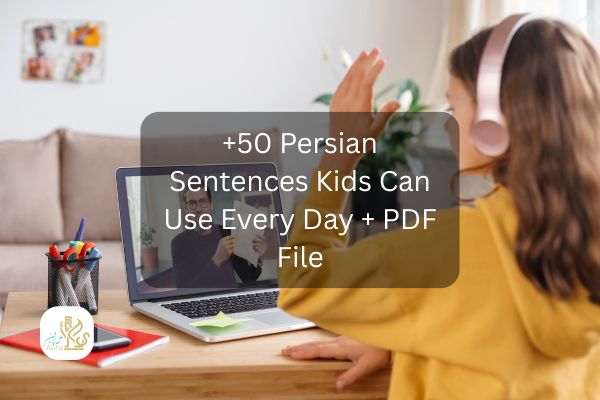
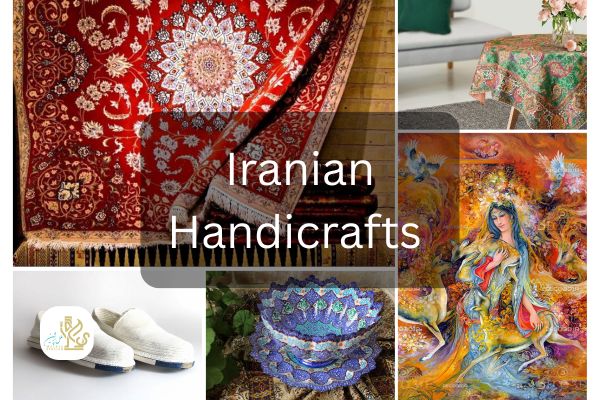
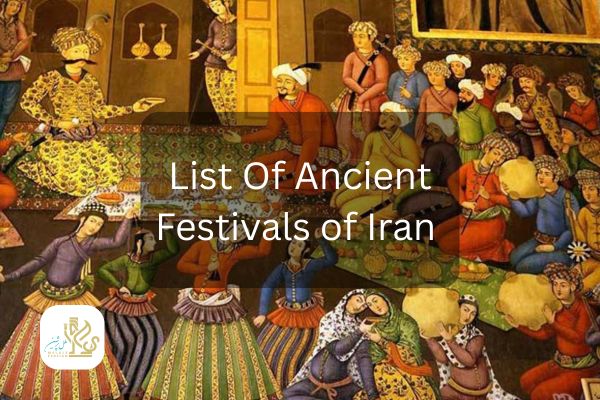


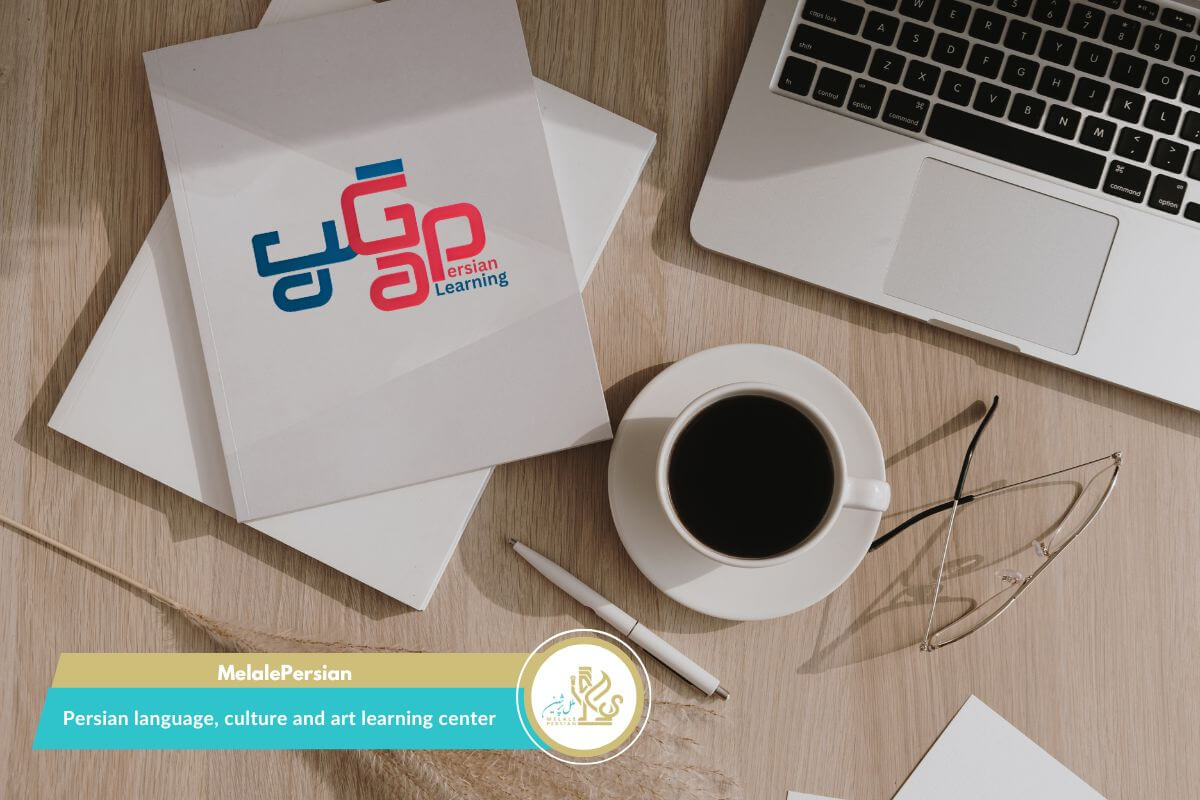
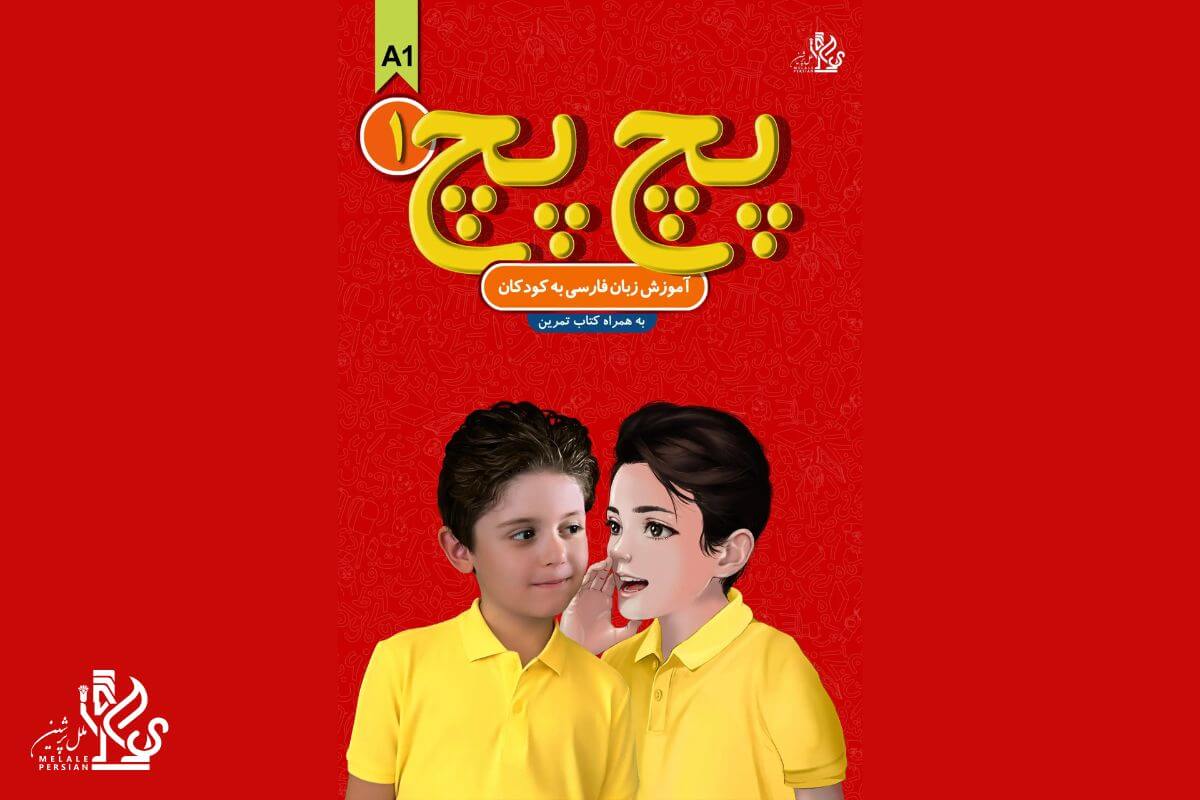
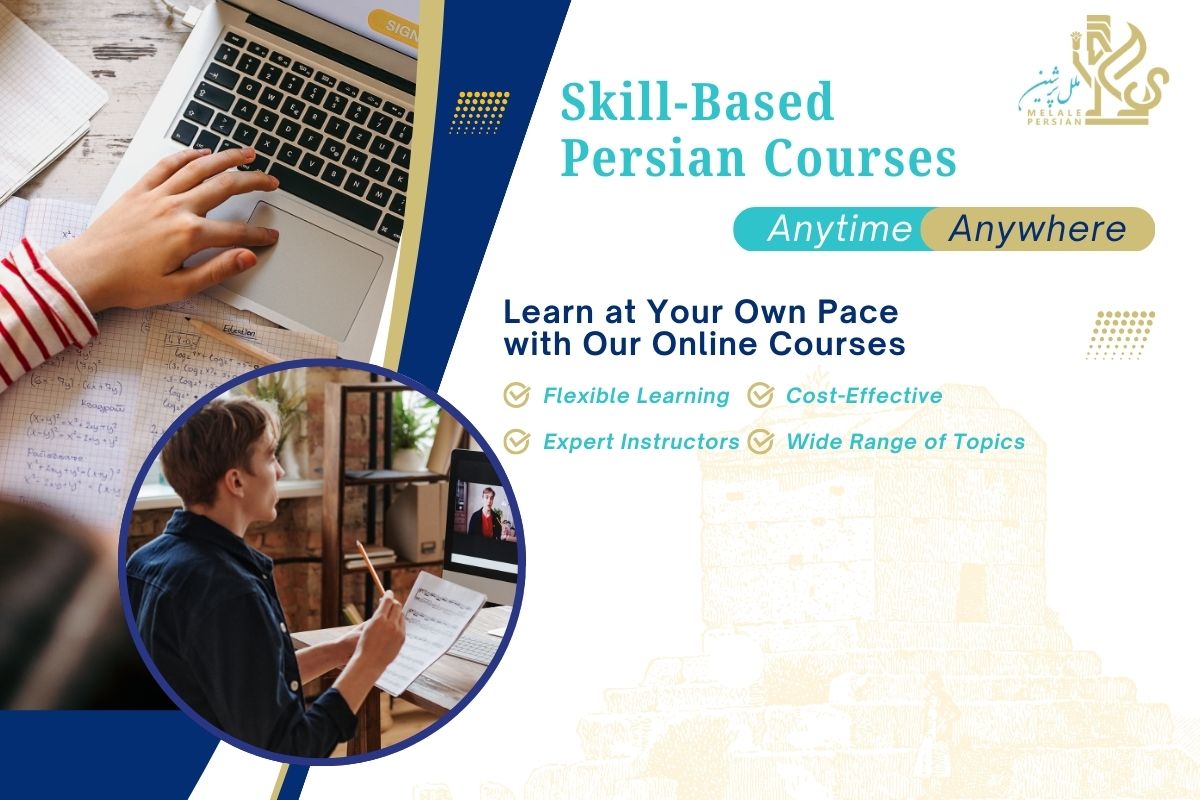
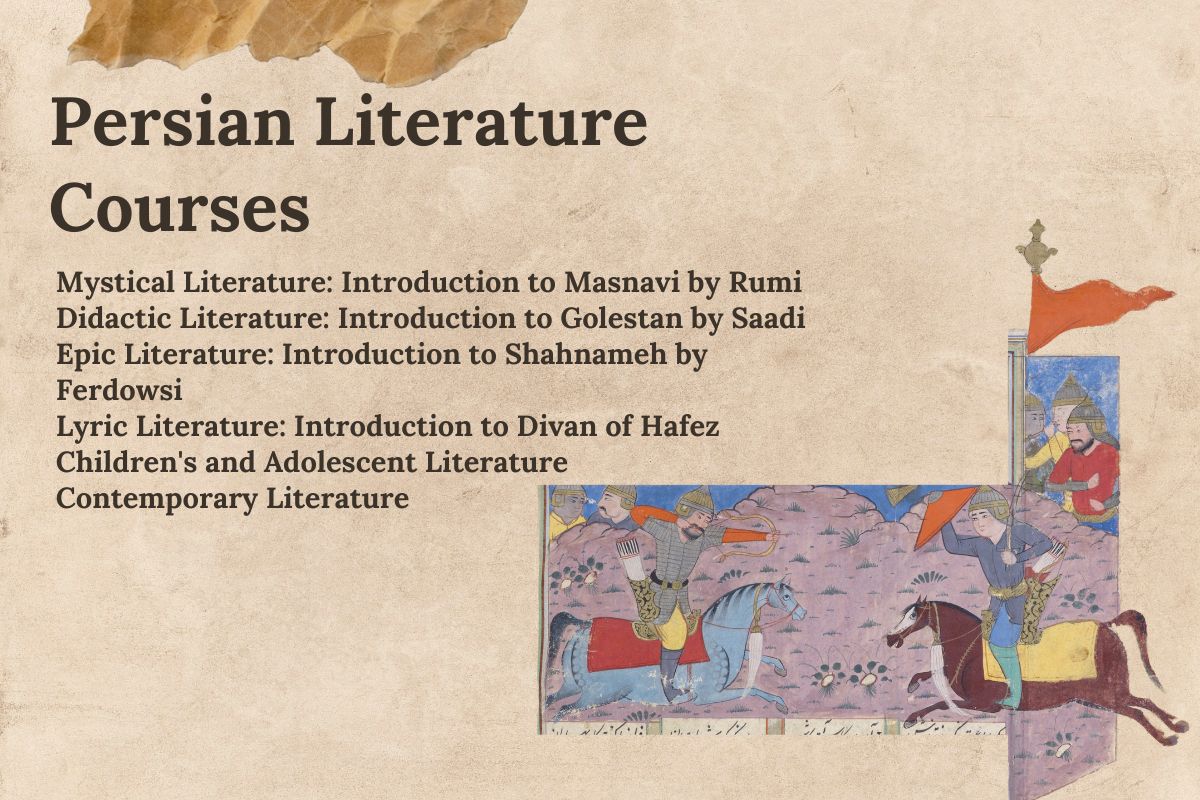
Very informative! But honestly, why does it seem like most Persian art forms peaked centuries ago? Are there any new modern Iranian artists who are innovating in these traditional crafts?
While Iranian arts have indeed reached their peak in the past centuries, there are many modern Iranian artists who are innovating and combining traditional crafts with contemporary techniques. These artists bring fresh perspectives to traditional art forms, blending old and new styles to create unique works that are being recognized both locally and internationally.
These arts are stunning! However, I noticed that many cultures have similar crafts. What makes Iranian pottery, for example, truly unique compared to, say, Turkish or Moroccan pottery?
While many cultures have similar crafts, Iranian pottery is distinct because of its intricate designs, the use of specific local materials, and the unique techniques passed down through generations. Iranian pottery often features specific patterns, shapes, and glazes that are tied to the culture and history of the region, setting it apart from pottery from places like Turkey or Morocco.
I absolutely love Persian carpets, but I’m wondering: How can someone new distinguish between an authentic handmade carpet and a machine-made one? Are there simple signs to look for?
One key way to distinguish a handmade carpet from a machine-made one is to look at the back of the carpet. In handmade carpets, the knots are often uneven and the design is visible on both sides. Machine-made carpets usually have a more uniform design and are often smoother. The quality of the wool and the intricacy of the pattern can also be indicators of a handmade piece.
Really interesting article! But I’m curious: Why don’t we see more Iranian handicrafts in international exhibitions? With so much beauty, it seems unfair that they are not more famous globally. Is there a reason?
While Iranian handicrafts are incredibly beautiful, they may not always be showcased in international exhibitions due to logistical challenges or lack of global exposure. However, there are increasing efforts to bring these crafts to the international stage, and many cultural exchanges are happening to share Iranian art and craft with the world.
Wow, such beautiful crafts! I’m amazed by the variety. Quick question though: Are these crafts still made 100% by hand today, or do modern technologies play a role now too? Would love to know how traditions are preserved!
While many Iranian handicrafts are still made by hand, modern technologies have found their way into the process. For example, some tools and machines are used to improve the precision and speed of certain steps in production. However, the essence of these crafts remains traditional, with much of the process still relying on skilled artisans and their time-honored techniques.